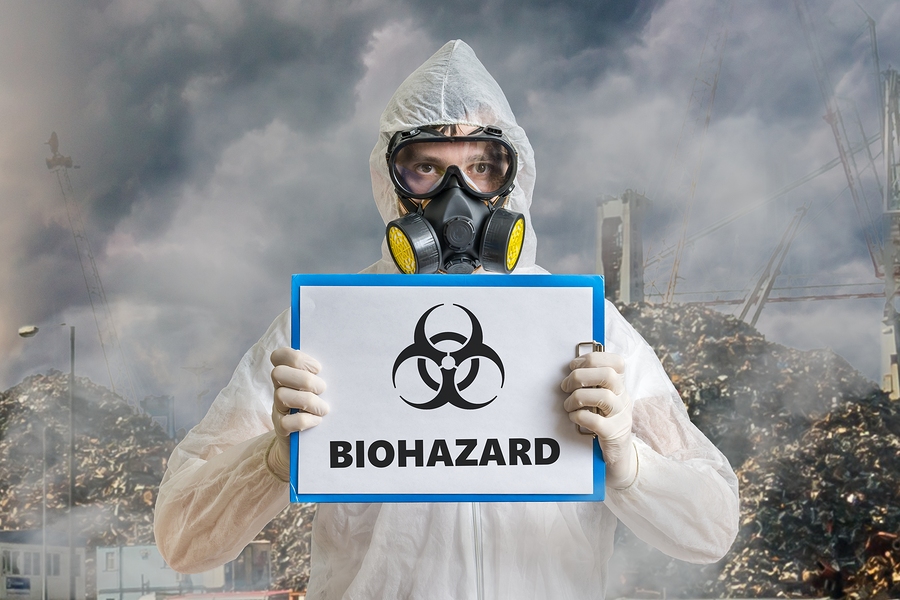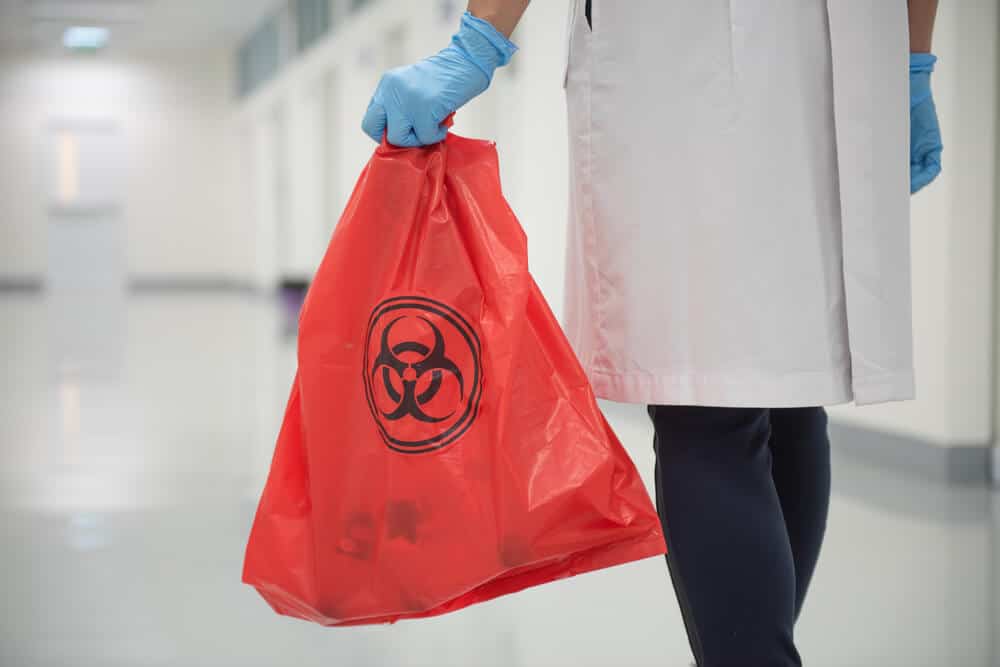Specialist Homicide and Suicide Cleanup: Compassionate and Discreet Providers
Specialist Homicide and Suicide Cleanup: Compassionate and Discreet Providers
Blog Article
Specialist Biohazard Cleaning and Decontamination for Blood, Bodily Fluids, and Hazardous Products
The prospective wellness dangers linked with exposure to biohazards emphasize the essential requirement for meticulous handling and thorough clean-up. As we navigate the complex landscape of biohazard cleanup, recognizing the nuances of laws, compliance, and the customized devices at play becomes critical in making sure a detailed and risk-free purification process.
Health And Wellness Threats of Biohazard Direct Exposure
Exposure to biohazards postures considerable wellness risks that can lead to extreme consequences for neighborhoods and people alike. Biohazards incorporate a vast array of organic substances, including blood, physical liquids, mold, germs, infections, and various other potentially contagious products. When people enter into contact with these biohazards, whether with crashes, inappropriate handling, or ecological exposure, they encounter the threat of having significant illnesses or conditions.
One of the primary health risks related to biohazard direct exposure is the transmission of transmittable conditions. Bloodborne virus such as HIV, liver disease B and C, and different germs can be present in biohazardous materials, presenting a direct risk to human health. Inhaling air-borne biohazards like mold and mildew spores or entering into call with infected surface areas can likewise result in breathing issues, allergies, and other adverse wellness results.
In addition, biohazard direct exposure can have lasting wellness effects, with some conditions manifesting years after the preliminary contact (Blood Cleanup). For that reason, it is important to prioritize correct biohazard cleansing and decontamination to mitigate these wellness dangers and guarantee the safety of areas and people

Specialized Educating for Biohazard Cleaning
When it pertains to managing biohazard cleanup effectively and safely, specialized training plays an essential role in making sure correct decontamination procedures are complied with. Biohazard cleaning requires particular understanding and abilities to properly mitigate dangers related to bloodborne virus, physical fluids, and dangerous products. Experts educated in biohazard cleanup go through strenuous instruction on exactly how to securely take care of, remove, and take care of biohazardous materials to protect against contamination and exposure.
Specialized training for biohazard clean-up covers a variety of crucial topics, consisting of correct personal protective devices (PPE) usage, bloodborne virus recognition, decontamination methods, and contaminated materials disposal procedures. People learnt biohazard clean-up are equipped with the required knowledge to analyze contamination degrees, determine possible risks, and apply ideal cleanup procedures in conformity with regulative criteria.
Continual training and education and learning are critical in the field of biohazard cleanup to stay updated on the newest decontamination technologies, safety procedures, and guidelines. By purchasing specialized training, biohazard cleanup professionals can effectively reply to emergency cleaning scenarios and secure both public health and wellness and the environment.
Relevance of Proper Purification Methods
Utilizing correct purification techniques is vital in biohazard clean-up to properly get rid of harmful materials and reduce wellness risks. Effective purification not only ensures the elimination of visible traces of blood, physical liquids, and other biohazards but address likewise targets invisible virus that may posture severe health hazards if not properly removed. By following rigid decontamination methods, trained specialists can dramatically minimize the danger of direct exposure to harmful microorganisms, viruses, and bacteria that could lead to infections or diseases.
Proper decontamination strategies include making use of customized tools and disinfectants that are especially created to neutralize biohazards successfully. Detailed cleansing and disinfection of infected areas are important to protect against the spread of pathogens and make sure a safe atmosphere for passengers. In addition, the proper disposal of biohazardous waste complying with decontamination treatments is vital in stopping contamination of various other surfaces or people.

Devices and Tools for Safe Cleanup
When dealing with blood, bodily liquids, or harmful materials, biohazard cleansing experts depend on specialized gear to decrease direct exposure risks and extensively sanitize the affected see here location. In addition, biohazard cleaning sets consisting of disinfectants, absorbing materials, and biohazard bags are used to securely dispose and have of polluted items.
Advanced cleaning devices like hospital-grade anti-bacterials, HEPA-filtered vacuums, and fogging makers are used to sterilize surface areas and remove biohazards successfully. Specialized tools such as sharps containers and biohazard waste disposal containers are utilized to securely take care of sharp objects and biohazardous waste products. By making use of the best devices and devices, biohazard cleansing professionals can make certain an extensive cleaning process that prioritizes security and decreases health dangers for both employees and residents of the afflicted area.
Rules and Conformity in Biohazard Cleansing
Appropriate adherence to regulations and conformity criteria is extremely important in biohazard cleansing to guarantee the safety of both personnel and the environment. Government agencies such as OSHA (Occupational Safety and Health Administration) and the EPA (Environmental Security Company) have established particular guidelines for biohazard cleanup treatments to minimize wellness risks and environmental contamination. These policies cover a variety of aspects including the handling, transportation, and disposal of biohazardous materials, along with the essential training and safety devices needed for workers associated with the cleaning procedure.
Biohazard cleansing companies should stay up-to-date with these laws to ensure that their operations meet the called for safety and security requirements. Failure to abide by these laws can cause serious consequences, consisting of fines, lawsuit, and endangering the health of people and the setting. By adhering to rigid policies and compliance measures, biohazard cleaning firms can properly alleviate risks and make certain a comprehensive and secure clean-up process great post to read for all events entailed.
Final Thought
To conclude, biohazard cleansing and purification need specialized training, proper techniques, and adherence to regulations. Exposure to blood, bodily fluids, and dangerous materials poses substantial health dangers, making it essential to make use of the best tools and tools for risk-free cleaning. By complying with strict methods and guidelines, specialists can efficiently minimize the dangers associated with biohazard exposure and make certain the safety of both themselves and others.
As we navigate the complex landscape of biohazard cleaning, recognizing the nuances of regulations, compliance, and the specific devices at play comes to be crucial in ensuring a safe and extensive decontamination process. (Blood Cleanup)
When it comes to dealing with biohazard clean-up successfully and safely, specialized training plays an essential role in making sure correct purification treatments are followed.Utilizing appropriate decontamination techniques is important in biohazard cleaning to properly eliminate dangerous products and lessen health and wellness threats. Additionally, biohazard cleaning sets consisting of anti-bacterials, absorbent products, and biohazard bags are used to safely get rid of and have of infected items.
Government agencies such as OSHA (Occupational Safety and Health Administration) and the EPA (Environmental Protection Company) have established certain standards for biohazard clean-up treatments to reduce health risks and environmental contamination.
Report this page